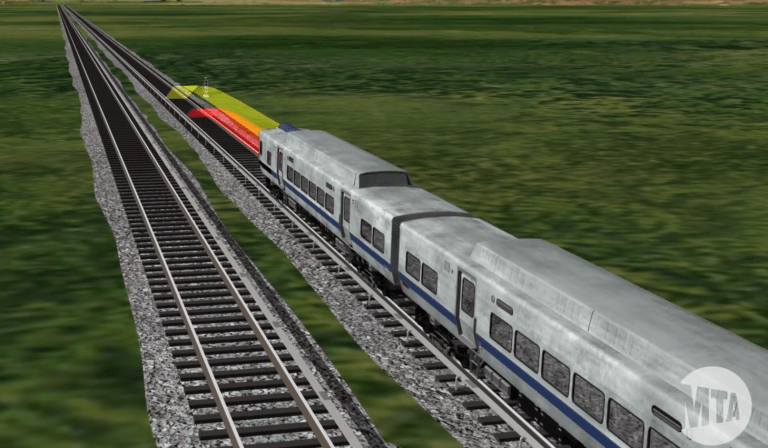
The 16-mile stretch of railroad tracks between the Port Washington LIRR station and Woodside are the first of the Long Island Rail Road to implement a new safety advancement system that began to take effect on Dec. 17.
Positive Train Control is supposed to aid in “eliminating the potential for human error to contribute to train-to-train collisions, trains traveling into zones where railroad employees are working on tracks, or derailments caused by a train traveling too fast into a curve or into a misaligned switch,” according to a news release from the MTA.
Transponders are installed on trains and along the tracks that will communicate to a centralized hub in order to transmit railroad conditions in real time.
If the radio-based system detects a train going too fast or on track to overlook a stop signal, the new technology will kick in to slow down or stop it while notifying the conductor it is doing so.
MTA Chief Safety Officer Patrick Warren said in a news release: “While no single technology can eliminate all risk, the introduction of the safety system dramatically reduces the risk of train accidents. The MTA remains steadfast in its drive to sustain and improve safety measures in all aspects of the operation of its railroads.”
The LIRR already employs in-cab signaling and automatic civil speed enforcement systems which Positive Train Control will build upon.
The implementation of the new safety system across all tracks of the LIRR and Metro North is slated to be completed by Dec. 31, 2020, before the MTA’s federal deadline for the project.
After a California commuter train crashed and killed 25 people in 2008, the federal government set a requirement for commuter railroads to install needed safety equipment by 2015. When railroad authorities expressed that they could not meet that deadline, they were granted an extension until Dec. 31, 2018. Those who met certain criteria were granted an extension until December 2020, including the MTA.
An informational video released by the MTA in 2016 said that the entity has allocated $1 million to the project.
It estimates that project-wide, over 1,000 onboard communication units will be installed as well as 9,000 transponders along the railroad tracks.
David Meyer, the MTA’s chief safety office said in the video that the plans for the new system are unique to each railroad.
“PTC must be custom-designed and built for each railroad,” he said. “A time-intensive and very expensive undertaking.”
According to an October Safety Report released by the LIRR, the Reportable Customer Accident Rate per million has decreased from 4.20 from November 2016 to October 2017 to 2.06 over the same period of time this year.
Grade crossing incidents have decreased from 11 for the year as of October 2017 to seven as of October this year. Train collisions increased this year from last year with there having been three at the time of the report compared to one last year.
Aaron Donovan, a spokesman for the MTA, did not have information on the specific collisions readily available but said that most collisions involve work trains that do not carry any passengers.
There was one reported train derailment each year.
“Safety is a core value of the Long Island Rail Road, and we aggressively look for new and better ways to improve safety across the entire rail network,” LIRR President Phil Eng said in a statement.
The Port Washington Branch includes stops at the Great Neck, Manhasset and Plandome stations.






